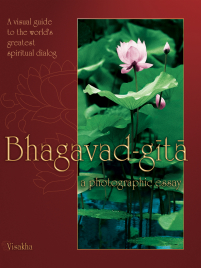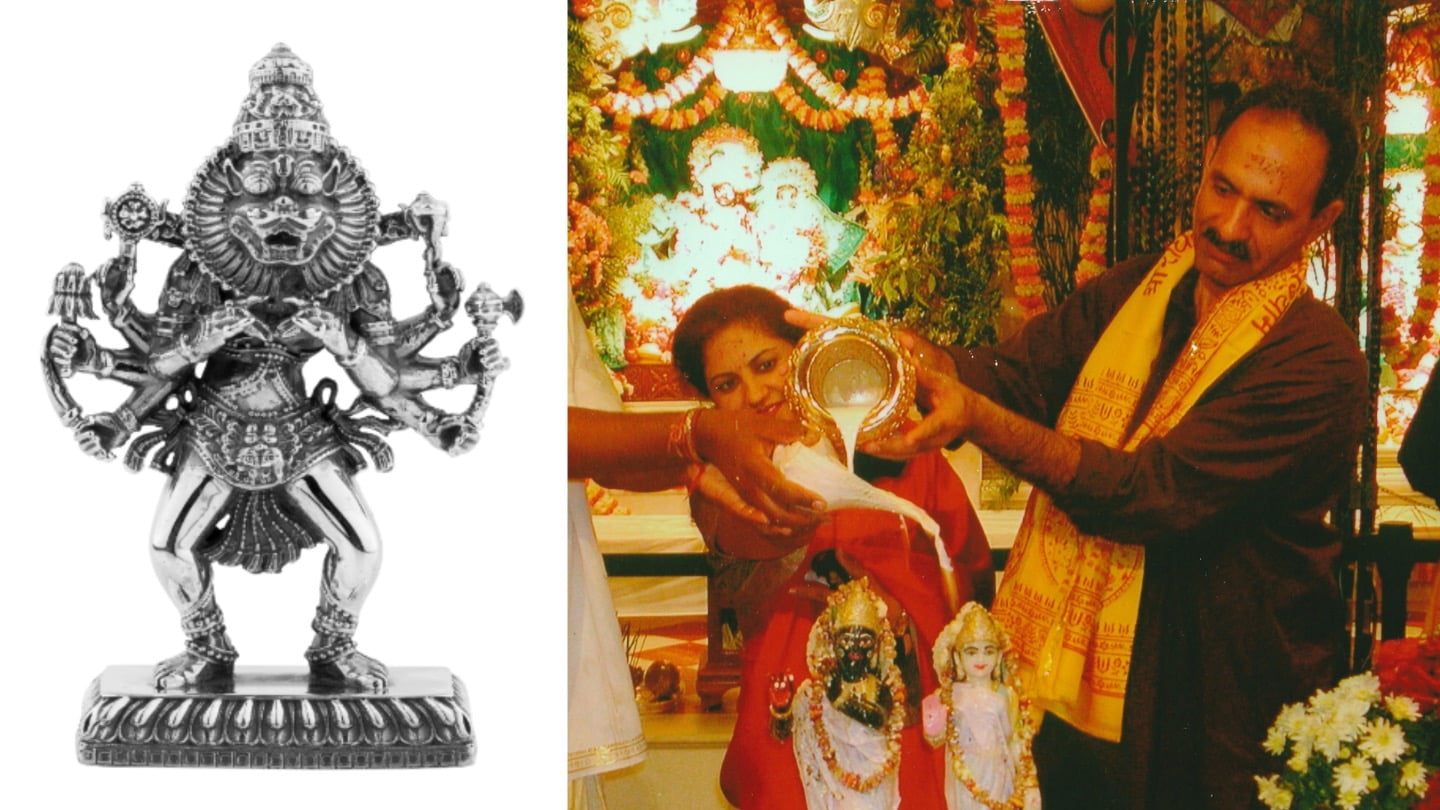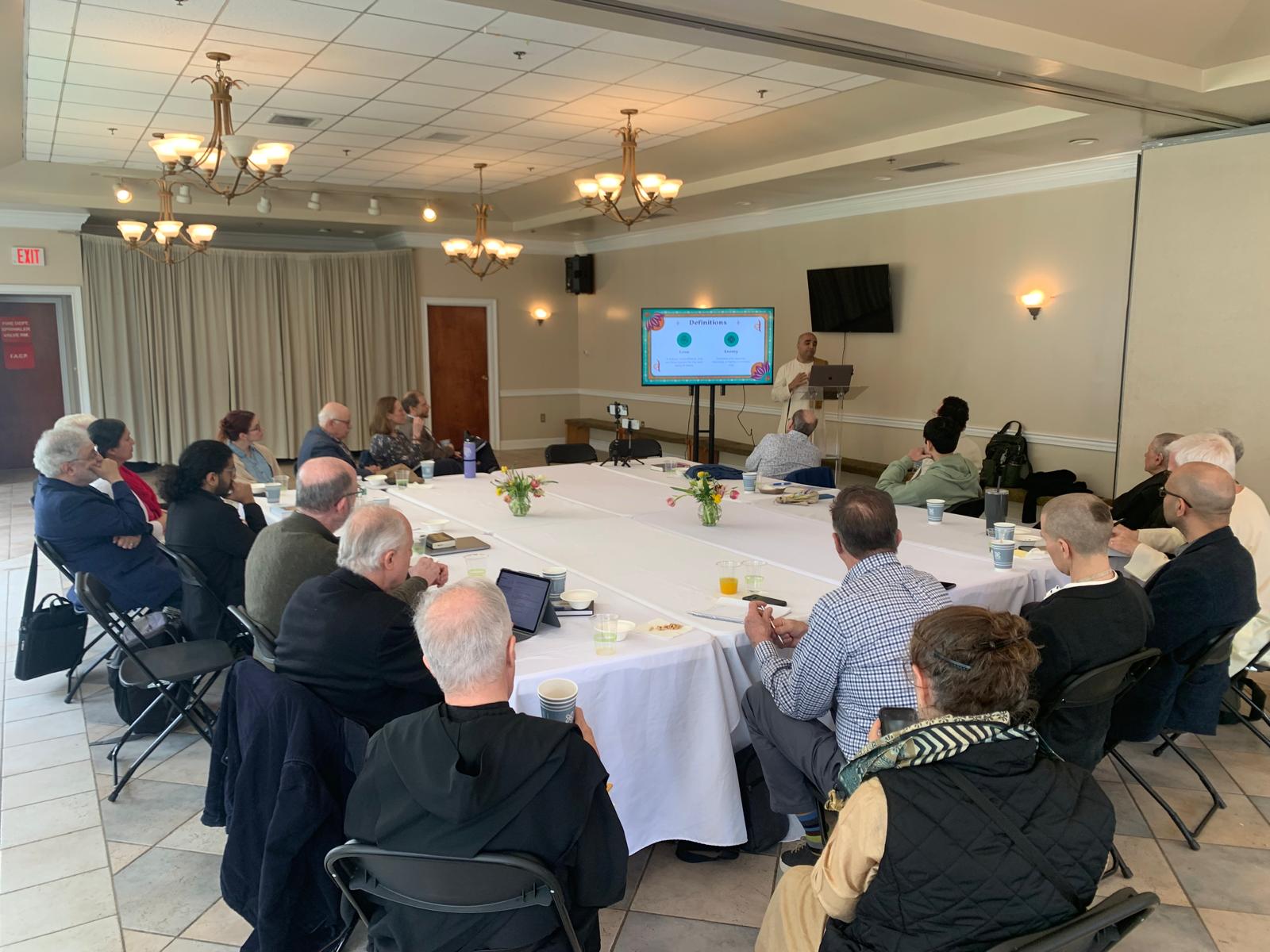New Photographic Edition of God’s Song Arrives for Gita Jayanti
By Madhava Smullen | Dec 11, 2010

A new edition of the Bhagavad-gita by Visakha Dasi, a disciple of ISKCON’s founder Srila Prabhupada, has arrived just in time for Gita Jayanti, which commemorates the day, 5,000 years ago, when Lord Krishna instructed the warrior Arjuna on the Battlefield of Kuruksetra.
Subtitled “A Photographic Essay,” it presents one of the world’s greatest wisdom texts in a format that is relevant, easy to understand and captures the original dialog between Krishna and Arjuna.
Visakha first encountered the Bhagavad-gita while on the adventure of a lifetime in the summer of 1971. She had been studying photography at the Rochester Institute of Technology, when she met graduate student John Greisser, who was doing research for his Master’s thesis on “the Hare Krishna people.” The catch? It was in India, and he invited her to come with him.
And that’s how she ended up trekking at the snowline in the Himalayas at 10,000 feet, staying in an abandoned cowshed for three days, living off limited supplies… and reading the MacMillan’s abridged version of Srila Prabhupada’s Bhagavad-gita As It Is, which she’d discovered buried at the bottom of John’s backpack.
“I couldn’t completely understand it, but I was overwhelmed by its profundity and the possibilities it suggested,” Visakha says now.
That winter, she and John were initiated by Srila Prabhupada, John receiving the name Yadubara Dasa. Early on, hearing that they had a background in photography, ISKCON managers requested them to make films about the movement, and they complied. Starting with Hare Krishna People in 1974, they made a series of inspiring documentaries including New Vrindaban: A Spiritual Frontier, Lord Chaitanya: the Golden Avatar, and Your Ever-Well Wisher, a film about Srila Prabhupada’s life.
Over the years, Visakha never forgot the impression that the Bhagavad-gita had made on her. And in 1996, she wrote and illustrated Our Most Dear Friend, a version of the Gita for children with simple text and colorful photographic montages. Released by Torchlight Publishing, the book sought to deepen childrens’ understanding of themselves, God, and His creation.
Next, Visakha, decided to put together a more extensive illustrated Bhagavad-gita, aimed at adult readers and including all eighteen chapters.

“I wanted to make the Bhagavad-gita accessible for people who haven’t read it before,” she says, commenting on her current release. “I think that many newcomers are daunted when they see Srila Prabhupada’s 800-page Bhagavad-gita As It Is, full of devanagari text and esoteric topics such as the length of Lord Brahma’s Day. So I wanted to create something with simple text and photographic meditations that would be a bridge to Srila Prabhupada’s Gita.”
In preparation, Visakha read through Bhagavad-gita As It Is, thinking carefully about how to relate every sentence to the general Western audience—people who might have never even heard of Bhagavad-gita before—and about how to present it in a way that would appeal to them and be relevant to them.
One of the subtle changes she made was to use the neutral gender, rather than the masculine gender commonly used in Srila Prabhupada’s books. “People today are much more gender-conscious in their language than they were in the 1970s when Prabhupada was writing his books,” she explains. “Language is not a dead thing, but fluid, changing as the generations change. So we felt it was important to address that in this book.”
At the same time, Visakha stayed true to Prabhupada’s edition of the Gita. “It may be modified slightly to attract modern Western readers, but they’re still essentially Prabhupada’s words,” Visakha says. “I can’t really claim to have written this book at all.”
Visakha absorbed herself completely in Srila Prabhupada’s works to find the many analogies she illustrates with beautiful, funny, and eye-opening photographs in Bhagavad-gita: A Photographic Essay. She read not only Bhagavad-gita As It Is in its entireity, but also went through all of Srila Prabhupada’s other books, conversations and lectures to find examples that would best illustrate the philosophical points made in the ancient text.
“I find analogies very powerful—they often create a rush of understanding for me,” she says. “For instance, at the end of Chapter Nine there’s the example that when a mother sees the shoes of her child, she remembers the child she loves. In the same way, whatever devotees see in this material world, we are reminded of its creator, our beloved Lord Krishna.”
The black and white photographs in Bhagavad-gita: A Photographic Essay are taken by Visakha and her husband Yadubara, and are a combination of selections from their personal archives and photos taken specifically for the book.
“When my husband travelled to India some time ago, I gave him a list of pictures that I needed, and he returned with some amazing shots—I’m so indebted to him for his expertise,” she says. “There’s a really dynamic picture of a street dog, to illustrate the point that a soul that enters the body of a dog is forced to make the sounds and movements of a dog’s body. There’s one of a cremation service, to illustrate Prabhupada’s point that when we attend a funeral, our thoughts often turn to renunciation and spiritual life, but quickly fade again due to material desires.”
Another, rather humorous, image depicts a man standing on his head buried up to his neck in sand. Popular with young readers, it makes the point that penance performed through self-torture and without regard to scriptural guidelines is in the mode of ignorance.
Another photo taken by Yadubara in India is a stunning image of a huge banyan tree, spreading its grand limbs out far and wide and reflected in the calm water of a pool. This is a striking visual representation of an analogy given by Lord Krishna in the Bhagavad-gita and commonly quoted by Srila Prabhupada.
“Krishna compares the spiritual world to a tree, and this material world to the tree’s reflection,” Visakha explains. “This world is a replica of the spiritual world, but perverted. What’s here is also there, but there it’s eternal and real.”

Other photos featured in Visakha’s Gita are of dioramas of Krishna, Arjuna, and various demigods in the First American Transcendental Exhibit (FATE) at the ISKCON Temple in Los Angeles. Many others feature Visakha herself, her daughters Rasamrita and Haripriya, and her husband Yadubara.
“There’s even a photo of my father-in-law, which I Photoshopped so that half of his face depicts him as a young man, and the other half as an older man, showing how the body ages, even though the soul does not,” she says. “So the book kind of doubles as a family album!”
Such creative Photoshop work and photo collages abound in Visakha’s book, as a way to create pleasing visuals that illustrate a given analogy as clearly and simply as possible.
“I hope they help people to understand Krishna’s words, and give them something to relate to,” she says. “For me personally, this whole project was very much a meditation—it helped me understand Prabhupada’s Bhagavad-gita tremendously, because I was so engrossed in trying to make a nice presentation.”
Bhagavad-gita: A Photographic Essay has already proved popular with members of the general public as well as devotee readers, both adults and children. The eleven-year-old daughter of a couple Yadubara and Visakha visited in Montreal literally couldn’t put the book down, carrying it with her wherever she went and reading through it progressively whenever she had a quiet moment.
“That was very exciting to see,” Visakha says. “It proves that this is the next level up from my children’s Gita, Our Most Dear Friend—and I hope it will inspire children to move on to the topmost level… Srila Prabhupada’s Bhagavad-gita As It Is.”
Visakha also feels that her book, with its timely release so close to Gita Jayanti, could be a good option for young people to delve into the ancient text on this sacred day.
“In many ISKCON temples, adults get together and read the Bhagavad-gita on this day,” she says. “So I’ve had this vision that young people could also be included in that meditation by getting a group together to read this photographic essay, discuss the text and pictures, and get inspiration too.”

As far as Visakha is concerned, there’s no limit to what one can learn from the Bhagavad-gita. As early as February next year, she’s set to release another book, Harmony and the Bhagavad-gita: Lessons from a Life-Changing Move to the Wilderness, which aims to blend philosophy with practical application.
“It’s about how my family and I moved from Los Angeles to Saranagati, an ISKCON community off the grid in the countryside of British Columbia, and about how we tried to apply the teachings of Bhagavad-gita in a practical way in our daily lives,” she says.
And that is what Visakha continues to do.
“Bhagavad-gita is essential as it contains the essence of Krishna’s instructions,” she explains. “Again and again I return to Bhagavad-gita to relish and rejoice in its message, to try to plumb the depths of its sweetness, and to make it real and alive in my life. As I grow older and see more clearly the pains of this world, Bhagavad-gita offers solace and—even more—joy. Krishna promises His devotees that they have more to look forward to than they can imagine.”














